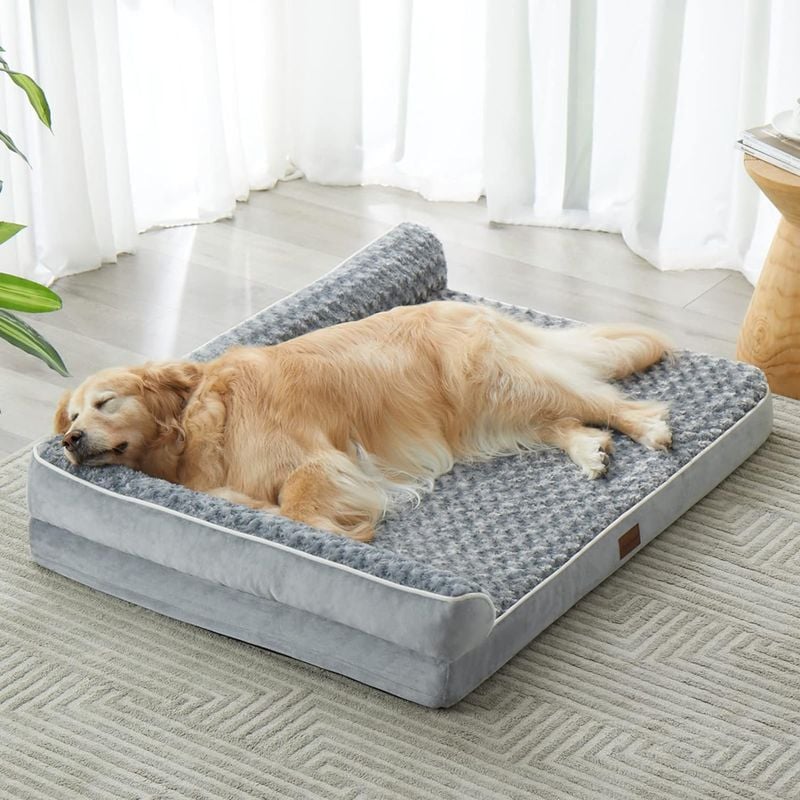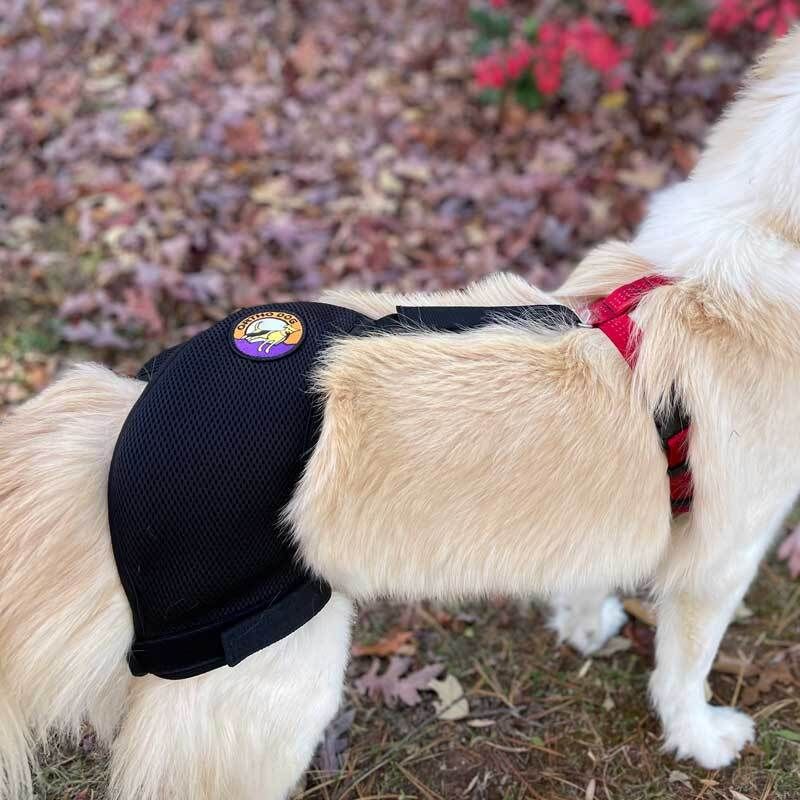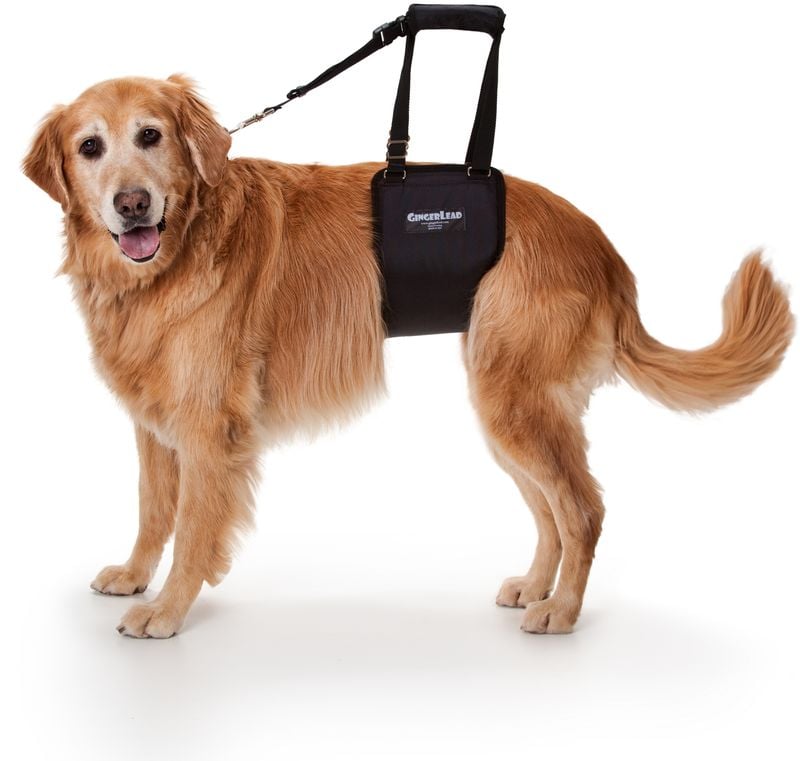12 Simple Ways to Ease Your Dog’s Arthritis Pain
Watching your dog slow down, struggle to stand, or hesitate to play can be heartbreaking—especially when arthritis is to blame.
You want to help, but knowing where to start isn’t always easy. Arthritis in dogs isn’t just about old age. It can affect pups of all sizes and breeds, sometimes even before their muzzle turns gray.
And while it’s not curable, it is manageable. From pain relief to lifestyle changes, there are simple things you can do to ease their discomfort. Some of them don’t even require a vet visit—just a bit of love, patience, and the right approach.
Below, we’ve gathered 12 effective ways to help your dog feel better, move easier, and enjoy more tail-wagging days ahead. Because no dog should suffer in silence—not when they’ve given you their whole heart.
1. Weight Management
Extra weight might seem harmless, but for a dog with arthritis, even a few added pounds can turn everyday movement into a painful chore.
Carrying too much weight places increased pressure on already-inflamed joints, leading to more stiffness, discomfort, and reduced mobility.
Keeping your dog at an ideal weight doesn’t just reduce pain—it helps delay the progression of arthritis altogether. A vet-approved feeding plan and regular portion control go a long way.
Avoid overfeeding treats, and stick to meals that are nutrient-rich but calorie-controlled.
If your dog already needs to shed a few pounds, don’t stress. Slow, steady weight loss is safer and more effective. The more comfortable your dog feels moving around, the happier and more mobile they’ll be—no matter their age.
2. Low-Impact Exercise
When your dog’s joints ache, rest seems like the safest choice—but too much inactivity can actually make arthritis worse.
Gentle, low-impact exercise is key to preserving your pup’s mobility and strengthening the muscles that support their joints.
Daily short walks, especially on soft surfaces like grass or dirt, help keep the joints lubricated and prevent stiffness. Swimming is another excellent option—it’s easy on the joints and lets your dog move freely without pressure.
Avoid high-impact activities like jumping or rough play. Instead, stick to a consistent routine that gradually builds endurance without strain. Pay attention to your dog’s cues and let them set the pace.
Movement is medicine when done mindfully, and even small doses of activity can make a big difference in their comfort and quality of life.
3. Orthopedic Dog Beds
If your dog struggles to get comfy at night, it might be time to upgrade their sleeping situation.
Orthopedic dog beds are designed to provide superior joint support, especially for senior dogs or those living with arthritis. These beds cushion pressure points and help distribute weight evenly.
Memory foam is a popular choice because it molds to your dog’s body, relieving the stress on sore joints.
Elevated sides or bolsters also give your pup something to lean on for extra comfort. And unlike the floor—or a lumpy old bed—orthopedic options maintain their shape and firmness over time.
Placing the bed in a warm, draft-free spot also helps. Arthritis pain tends to flare up in the cold, and a cozy environment makes a world of difference for achy joints. It’s a small change with big results.
4. Joint Supplements
You don’t need a prescription to support your dog’s joints—just the right supplement.
Products containing glucosamine, chondroitin, MSM (methylsulfonylmethane), and omega-3 fatty acids are among the most popular and vet-recommended for arthritis relief.
These ingredients work together to reduce inflammation, slow cartilage breakdown, and promote healthier joint function. While supplements won’t cure arthritis, they can improve your dog’s comfort and mobility over time when used consistently.
Most come in chewable treats, powders, or capsules, making them easy to sneak into meals. Just be patient—results may take several weeks to appear.
Always consult your vet before starting any supplement, especially if your dog takes other medications. Combined with a healthy lifestyle, joint supplements can be a game-changer for long-term joint care.
5. Pain Medications
Sometimes, managing arthritis pain requires more than just lifestyle changes. That’s where prescription pain medications come in.
Vets often recommend NSAIDs (non-steroidal anti-inflammatory drugs) to reduce inflammation and provide real relief when your dog’s discomfort is significant.
These medications can improve your dog’s quality of life quickly, especially during flare-ups or colder months when symptoms tend to worsen.
There are also alternative options like gabapentin or tramadol for nerve-related pain or more chronic cases.
Of course, medications should always be given under veterinary supervision. Regular checkups and blood work ensure your dog stays safe while benefiting from pain control.
When used correctly, pain meds don’t just dull discomfort—they give your dog a better chance to move, play, and live with joy again.
6. Physical Therapy
Just like with humans, physical therapy can help dogs regain strength and flexibility while managing arthritis pain.
Canine rehabilitation specialists use a range of techniques—like massage, stretching, and even underwater treadmills—to improve joint function and overall mobility.
Hydrotherapy is especially helpful. It allows your dog to move freely in water, relieving the pressure on sore joints while still building muscle and stamina.
Other forms of therapy may include balance exercises or targeted stretching that can be done at home.
Beyond the physical benefits, these sessions often lift your dog’s spirits too. They feel better, move easier, and become more engaged. If you have access to a certified canine rehab center, it’s worth looking into.
It’s one of the most proactive and empowering steps you can take.
7. Warm Compresses
There’s a reason humans turn to heating pads for sore muscles—and dogs benefit just as much. Warm compresses can help soothe stiff, achy joints by increasing blood flow and relaxing surrounding muscles. It’s a simple, gentle way to offer quick relief.
You can use a microwaveable heating pad wrapped in a towel or even a warm, damp cloth. Apply it to your dog’s hips, knees, or shoulders for 10–15 minutes at a time. Just make sure it’s not too hot and that your dog seems comfortable.
This method is especially effective before bedtime or walks, when joints need a little help getting loosened up. Warmth can make movement less painful, and it’s a quiet, calming ritual that brings both comfort and bonding.
8. Cold Therapy for Swelling
While warmth relaxes stiff muscles, cold therapy is your best friend when it comes to managing inflammation and swelling. Icy compresses help numb pain and reduce joint puffiness after activity or on particularly bad arthritis days.
To try this at home, wrap a bag of frozen peas or a cold pack in a towel and gently place it on the swollen joint for 10–15 minutes. Never apply ice directly to your dog’s skin—it can cause damage and make them uncomfortable.
Use cold therapy after exercise or if you notice a specific area looks hot or inflamed. It’s a great tool to rotate with warm compresses depending on your dog’s needs.
Just like with humans, knowing when to use heat vs. cold can make a big difference in pain control.
9. Non-Slip Flooring
Slippery surfaces and stiff joints do not mix. If your home has tile, hardwood, or laminate floors, your arthritic dog may struggle just to walk without slipping. That constant instability can lead to falls, joint strain, and added pain.
Luckily, non-slip flooring solutions are easy to implement. Rugs with rubber backing, yoga mats, or foam tiles can create safe pathways where your dog walks most. Even anti-slip dog socks with grips can give them better traction on smooth floors.
Not only does this make movement safer, but it also gives your dog more confidence.
The fear of slipping can make them hesitant to get up or walk—something no dog should have to feel in their own home. A little grip goes a long way toward giving them back their freedom.
10. Mobility Aids
As arthritis progresses, simple movements like climbing stairs or getting into the car can become painful hurdles.
That’s where mobility aids come in. From harnesses with lift handles to ramps and pet stairs, these tools reduce the strain on joints and make daily life more manageable.
A lifting harness can help support your dog’s back legs during walks or bathroom breaks, while ramps allow easy access to beds, couches, or vehicles without risky jumps.
Even elevated food bowls can reduce stress on the neck and shoulders.
Think of these aids as a form of empowerment. They don’t just make tasks easier—they give your dog more independence. And that sense of freedom, even in small doses, can boost their mood and improve overall wellbeing.
11. Acupuncture or Laser Therapy
It might sound surprising, but many dogs with arthritis find genuine relief through alternative therapies like acupuncture and cold laser treatment.
These non-invasive methods target inflammation and stimulate healing in ways that traditional medications might not.
Canine acupuncture involves placing tiny needles at specific points to improve circulation and relieve pain. Cold laser therapy, on the other hand, uses light energy to reduce swelling and boost cell regeneration in affected joints.
Both are safe when administered by certified professionals, and many pet owners notice improvements in mobility and comfort after just a few sessions.
These therapies can be a great supplement to medication or a more natural alternative for dogs who can’t tolerate pharmaceuticals. It’s a gentle, holistic option that’s worth exploring.
12. Anti-Inflammatory Diet
Food is more than fuel—it can also be medicine. An anti-inflammatory diet can help manage your dog’s arthritis by reducing systemic inflammation and supporting joint health from the inside out. It’s a simple but powerful piece of the treatment puzzle.
Omega-3 fatty acids from fish oil are especially beneficial, as they’re known to reduce joint swelling and stiffness. You can also look for dog foods that contain turmeric, green-lipped mussels, or antioxidants like vitamin E.
Switching to a joint-supportive diet doesn’t have to be complicated. Many commercial formulas are specially designed for mobility support and come vet-recommended.
As always, make any dietary changes gradually and check in with your vet to ensure your dog’s needs are being met. A well-fed body heals better—and feels better.


















